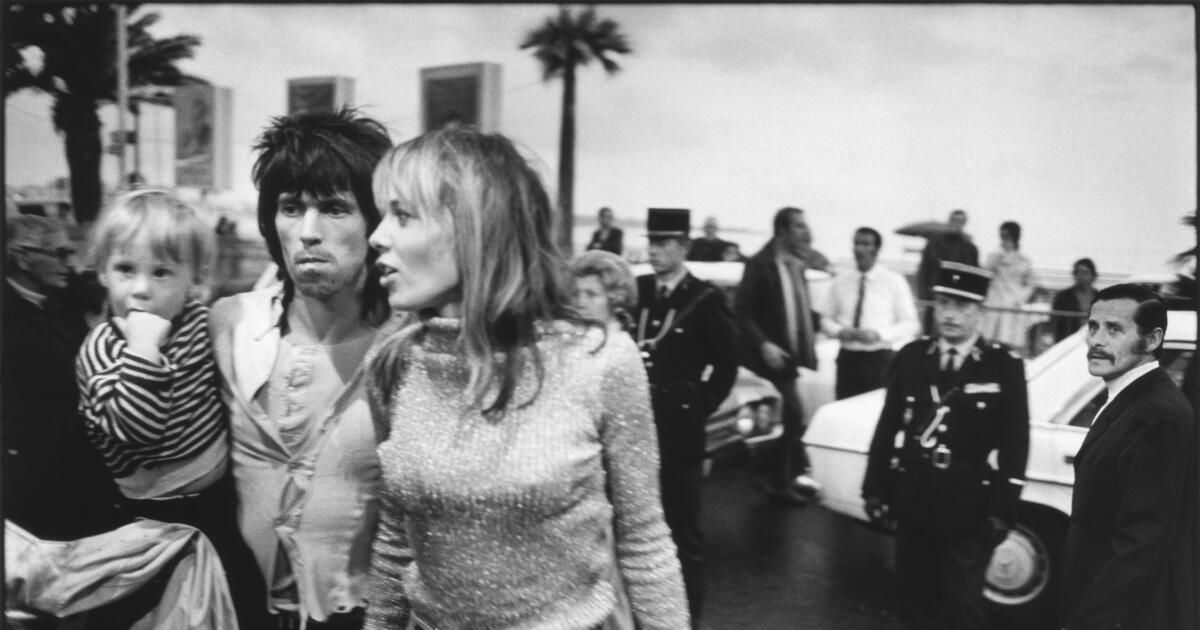The most epic era of influential rock girlfriends was surely the late '60s. When seen from a perspective that kicks up sexist dust – as is done in the propulsive new documentary “Catching Fire: The Story of Anita Pallenberg.” – it is possible to think of the Rolling Stones as those who live in his glamorous orbit of abandon, creativity and style, not the other way around.
An icon in her own right, the German-Italian wild child took everyone for a ride as fashionista, actress and muse of the most popular band in the world. Arguably, Pallenberg was both her original pirate spirit and her guide to broader cultural sophistication. But as the wife of Keith Richards and mother of her children, life in the maelstrom was impossible for her to manage. This profile by Alexis Bloom and Svetlana Zill is an attempt to recapture the valuable heat of Pallenberg's incandescence, without ever shielding viewers from the lasting burn marks of her life.
Bloom and Zill draw their narrative from unexplored sources: Pallenberg's never-published autobiography and a treasure trove of vibrant Super 8 home movies. (Access to both comes from her son, Marlon Richards, also an executive producer and interviewee; Pallenberg herself died in 2017). However, there is no doubt that “Catching Fire” is a hagiography that will polish images. What emerges are highs and lows seen from the inside, an illuminating memoir of an unsentimental woman who endured being called all the shameful names, with powerful notes of grace and understanding from a son whose eyes betray a difficult childhood. Scarlett Johansson reads Pallenberg's own words, although (perhaps to avoid undue scrutiny) without Pallenberg's Mitteleuropa accent.
Pallenberg's life is truly something to behold. From a bohemian lineage of music and art, he brought his rebellious charm directly to the Stones' dominance, giving the band a stylish influence. He first hooked up with shy, insecure founder Brian Jones, who capitalized on his model's cool, artsy dazzle until drug-addled sociopathy turned him into an outcast. Pallenberg then found something deeper with guitarist Richards. Of his anarchic energy, he admits, “It scared me.”
When she began an affair with Mick Jagger during the filming of “Performance,” Richards knew to stay away and withdrew to write “Gimme Shelter” to address her jealousy. Later, when he stayed with Richards, Jagger returned his feelings with “You Can't Always Get What You Want.” Pondering doesn't get much more canonical than that double shot, aside from the fact that his clothing in Richards' frame also secured him fashionable status.
When she and Richards became addicted parents fleeing Britain for France and the Swiss Alps, Pallenberg encountered the limits of freedom as a rock wife and mother. The most difficult to understand section of the documentary follows, marked by a pair of tragedies that put the darkest colors in this portrait of a reckless and kaleidoscopic adventure. Once again, Marlon's face and his measured words are what stays with you, there is no truer proof that being a rock god and the son of a goddess was not a lottery.
A recovering Pallenberg found some solace in his later years, earning a college degree, becoming a mentor to Kate Moss (also interviewed), and occasionally appearing in an offbeat film. It may seem shallow to call her last piece of rebellion her refusal to undergo plastic surgery, but as presented in “Catching Fire,” that's the point, every time her well-lived, wrinkled face shines in clips of her latest decades. There is nothing simple or orderly about being a pioneer.
'Catching Fire: The Anita Pallenberg Story'
Not qualified
Execution time: 1 hour, 50 minutes
Playing: Landmark Nuart, West Los Angeles; Laemmle NoHo 7











